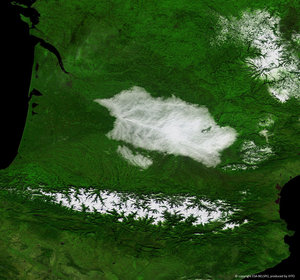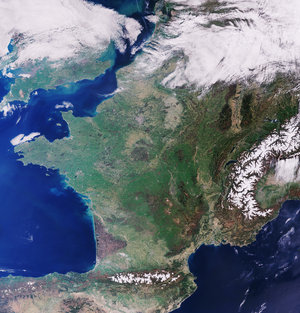Accept all cookies Accept only essential cookies See our Cookie Notice

About ESA
The European Space Agency (ESA) is Europe’s gateway to space. Its mission is to shape the development of Europe’s space capability and ensure that investment in space continues to deliver benefits to the citizens of Europe and the world.
Highlights
ESA - United space in Europe
This is ESA ESA facts Member States & Cooperating States Funding Director General Top management For Member State Delegations European vision European Space Policy ESA & EU Space Councils Responsibility & Sustainability Annual Report Calendar of meetings Corporate newsEstablishments & sites
ESA Headquarters ESA ESTEC ESA ESOC ESA ESRIN ESA EAC ESA ESAC Europe's Spaceport ESA ESEC ESA ECSAT Brussels Office Washington OfficeWorking with ESA
Business with ESA ESA Commercialisation Gateway Law at ESA Careers Cyber resilience at ESA IT at ESA Newsroom Partnerships Merchandising Licence Education Open Space Innovation Platform Integrity and Reporting Administrative Tribunal Health and SafetyMore about ESA
History ESA Historical Archives Exhibitions Publications Art & Culture ESA Merchandise Kids Diversity ESA Brand Centre ESA ChampionsLatest
Space in Member States
Find out more about space activities in our 23 Member States, and understand how ESA works together with their national agencies, institutions and organisations.
Science & Exploration
Exploring our Solar System and unlocking the secrets of the Universe
Go to topicAstronauts
Missions
Juice Euclid Webb Solar Orbiter BepiColombo Gaia ExoMars Cheops Exoplanet missions More missionsActivities
International Space Station Orion service module Gateway Concordia Caves & Pangaea BenefitsLatest
Space Safety
Protecting life and infrastructure on Earth and in orbit
Go to topicAsteroids
Asteroids and Planetary Defence Asteroid danger explained Flyeye telescope: asteroid detection Hera mission: asteroid deflection Near-Earth Object Coordination CentreSpace junk
About space debris Space debris by the numbers Space Environment Report In space refuelling, refurbishing and removingSafety from space
Clean Space ecodesign Zero Debris Technologies Space for Earth Supporting Sustainable DevelopmentLatest
Applications
Using space to benefit citizens and meet future challenges on Earth
Go to topicObserving the Earth
Observing the Earth Future EO Copernicus Meteorology Space for our climate Satellite missionsCommercialisation
ESA Commercialisation Gateway Open Space Innovation Platform Business Incubation ESA Space SolutionsLatest
Enabling & Support
Making space accessible and developing the technologies for the future
Go to topicBuilding missions
Space Engineering and Technology Test centre Laboratories Concurrent Design Facility Preparing for the future Shaping the Future Discovery and Preparation Advanced Concepts TeamSpace transportation
Space Transportation Ariane Vega Space Rider Future space transportation Boost! Europe's Spaceport Launches from Europe's Spaceport from 2012Latest
Snowy Pyrenees
Thank you for liking
You have already liked this page, you can only like it once!
The Copernicus Sentinel-2 mission takes us over the Pyrenees Mountains in southwest Europe. The mountain range forms a natural border between France and Spain with the small, landlocked country of Andorra sandwiched in between.
Zoom in to see this image at its full 10 m resolution or click on the circles to learn more about the features in it.
Stretching from the shores of the Mediterranean Sea on the east to the Bay of Biscay (Atlantic Ocean) on the west, this international mountain range is 430 km long. The area pictured in this image, captured on 30 January 2022, spans around 120 km from the village of Escallare in the east to Panticosa to the west.
Located in the Spanish province of Huesca in the Posets-Maladeta Natural Park lies Pico de Aneto, the highest mountain peak in the Pyrenees. It rises to an elevation of 3404 m and is also the third-highest mountain in Spain. Click on the circle in the image to take a closer look at Pico de Aneto.
Geological studies have revealed that the Pyrenees Mountains have been around for longer than the Alps, with their sediments first deposited in coastal basins during the Paleozoic and Mesozoic eras. The entire mountain range formed due to the upwelling of large sedimentary rocks by the collision of the Iberian and the Eurasian plate around 100 to 150 million years ago, followed by intense erosion from ice and water.
Snow covers many of the peaks year-round, especially those in the centre-section of the chain. The western Pyrenees typically receive greater precipitation than the eastern Pyrenees owing to moisture blowing in from the Atlantic Ocean. The mountain range is also home to several small glaciers, as well as many mountain lakes and some of the highest waterfalls in Europe including Gavarnie Falls which, at 422 m, is France’s highest waterfall.
Few people live at the Pyrenees’ highest elevations; however, Andorra is nestled among peaks near the eastern end of the chain (not visible in the image). With an area of around 468 sq km, Andorra is the sixth smallest country in Europe.
The Copernicus Sentinel-2 mission is designed to play a key role in mapping differences in land cover to understand the landscape, map how it is used and monitor changes over time. As well as providing detailed information about Earth’s vegetation, it can also systematically map different classes of cover such as forest, grassland, water surfaces and artificial cover like roads and buildings.
This image is also featured on the Earth from Space video programme.
-
CREDIT
contains modified Copernicus Sentinel data (2022), processed by ESA -
LICENCE
CC BY-SA 3.0 IGO or ESA Standard Licence
(content can be used under either licence)

Earth from Space: Snowy Pyrenees

Snowy Pyrenees seen by Proba-V

France

Toulouse, France















 Germany
Germany
 Austria
Austria
 Belgium
Belgium
 Denmark
Denmark
 Spain
Spain
 Estonia
Estonia
 Finland
Finland
 France
France
 Greece
Greece
 Hungary
Hungary
 Ireland
Ireland
 Italy
Italy
 Luxembourg
Luxembourg
 Norway
Norway
 The Netherlands
The Netherlands
 Poland
Poland
 Portugal
Portugal
 Czechia
Czechia
 Romania
Romania
 United Kingdom
United Kingdom
 Slovenia
Slovenia
 Sweden
Sweden
 Switzerland
Switzerland
























